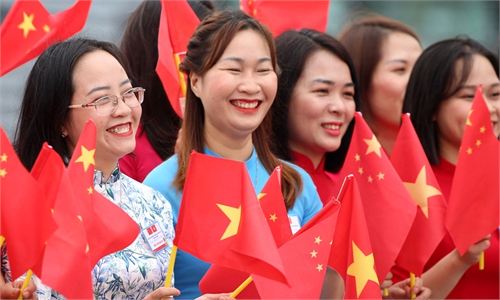IN-DEPTH / IN-DEPTH
New wave of Chinese enterprises going global shows unique characteristics, boosts potential for world-class enterprises
Editor's Note:
Since 2023, a new wave of Chinese enterprises going abroad has gained momentum. According to data from the Ministry of Commerce, China's non-financial outbound direct investments (ODI) in 2023 increased 16.7 percent year on year to 916.99 billion yuan. In US dollar terms, ODI totaled 130.13 billion dollars in this period, up 11.4 percent from a year earlier. Although it is no longer news that Chinese enterprises are going global, this new wave of overseas expansion by Chinese companies is showing more new characteristics. In this article, the Global Times reporters Xie Wenting and Bai Yunyi focused on Vietnam, which is close to China's "world factory" manufacturing base camp, and Mexico, which is close to the US market, and interviewed those involved in shaping these new markets. They shared their experiences with the Global Times, saying that in this process of global industrial chain reshaping, China indeed faces many challenges, but it is precisely in this era of "great overseas expansion" that China has the potential to produce truly "world-class enterprises."
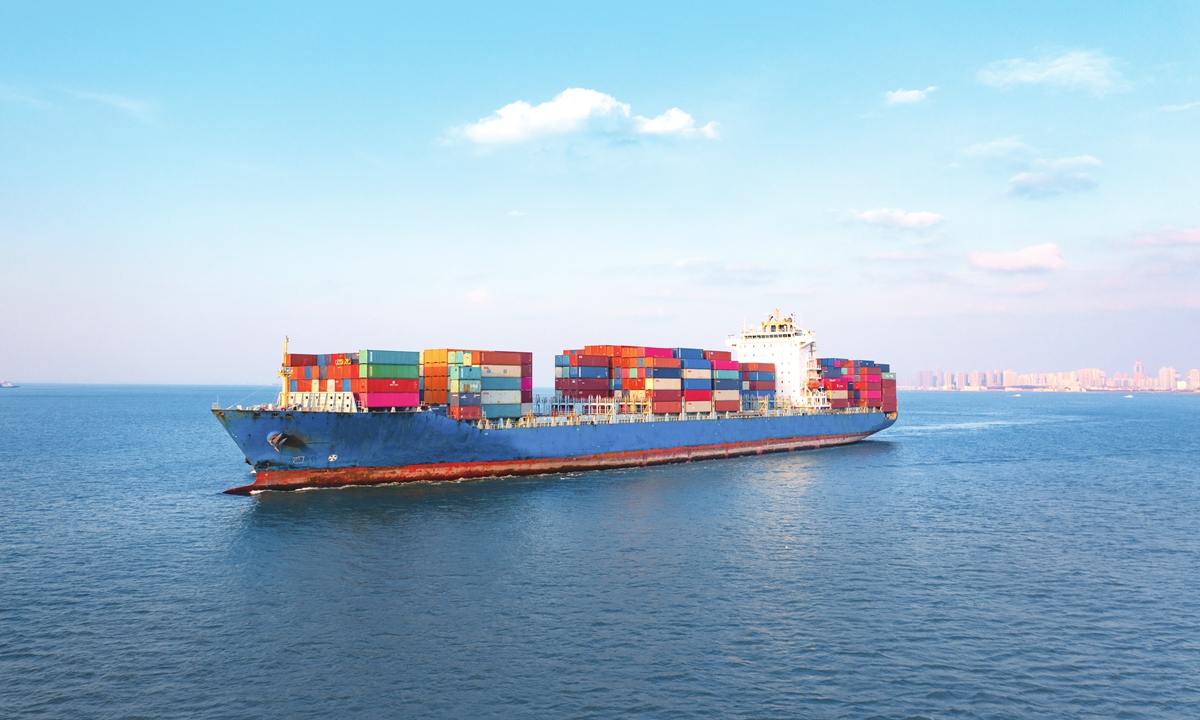
A new pie
"There are more Chinese people here!" — This might be the biggest impression that locals in Monterrey, the largest industrial city in northern Mexico, have had in the past two years. Whether in local parks or neighborhoods, or on international flights, Chinese faces are increasingly common.
In recent years, Mexico has become a new "gold mine" for many Chinese enterprises going abroad. The "triangular relationship" between the US, China, and Mexico has given rise to the popular term "nearshore outsourcing" in Mexican business circles in recent years. Many Chinese manufacturing companies have moved their production lines to Monterrey and other cities in northern Mexico.
"It's like a pie falling from the sky." Hu Hai, president of Hofusan industrial park in Mexico, describes the rise of Mexico's manufacturing industry in recent years.
"If the North American Free Trade Agreement (NAFTA), which took effect in 1994, was the first pie that fell from the sky for Mexico, then 'nearshore outsourcing' is the second pie," he said.
For Chinese enterprises, the biggest significance of setting up factories in Mexico is that their products can be considered Mexican-made, thereby avoiding the tariffs and non-tariff barriers that the US has imposed on Chinese goods amid China-US trade friction.
According to the updated United States-Mexico-Canada Agreement (USMCA) signed in 2020, many categories of products exported from Mexico to the US and Canada can enjoy lower or even zero tariffs. For example, if 75 percent of a car's components are produced in Mexico, the car can be exported to the US tariff-free.
It is worth mentioning that, compared to many other developing countries, Mexico itself has a strong industrial foundation: as early as the 1920s, American automotive company Ford set up factories in Mexico. After NAFTA took effect in 1994, many companies from other countries also transferred part of their industrial chains to Mexico.
However, a Chinese enterprise insider familiar with Mexico manufacturing industry told the Global Times that Chinese companies still face many challenges in setting up factories locally.
"Apart from the advantages in freight and tariffs, Mexico has almost no advantage over China in other areas of production," he said. He pointed out that in terms of labor and management efficiency, supply chain differences, and raw material costs, Mexico finds it hard to compete with China.
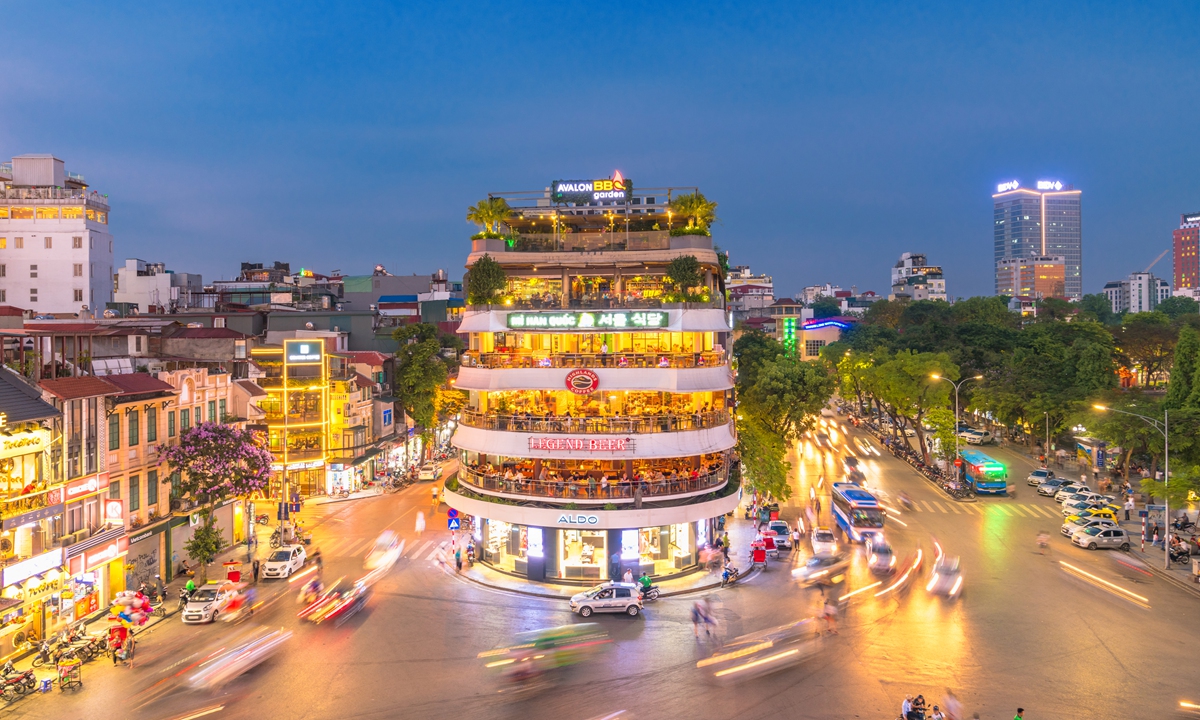
"Mexico's unique employment environment means that companies cannot simply transfer their management models from China to Mexico," Hu told the Global Times.
Three new characteristics
If Chinese enterprises going to Mexico are aiming to get closer to the US market, then their expansion to Vietnam is largely due to its proximity to China - the "world factory" base camp. Although it is not new for Chinese enterprises to enter Vietnam, in recent years, there have been significant differences compared to the past.
Zhang Weijie, a consultant working in the Vietnamese market, has interacted with a large number of Chinese enterprises expanding to Vietnam over the past two years. In his view, compared to 10 or 15 years ago, Chinese enterprises going to Vietnam now exhibit three new characteristics. First, manufacturing enterprises are upgrading from low value-added industries such as clothing and bags to mid-end manufacturing industries such as photovoltaics and 3C (computers, communications, and consumer electronics). Initially, they only engaged in downstream assembly in Vietnam, but in recent years, more upstream supply chains have also moved to Vietnam. Second, Chinese chain consumer brands such as Haidilao and Mixue Bingcheng have successfully established themselves in Vietnam in recent years. Third, there is the overseas expansion of Chinese technology and internet giants.
"The previous wave of Chinese enterprises going to Southeast Asian countries was mainly driven by the familiar logic of labor costs and consisted mainly of labor-intensive enterprises. However, the technical content and added value of this wave of enterprises going abroad have significantly improved," Zhang told the Global Times. "Moreover, the brand influence of Chinese enterprises going to Vietnam this time far exceeds that of the past."
Guo Wenchang is the deputy general manager of Ansheng Crane & Steel Structure Company. In 2020, Guo's company, which had long exported crane equipment to Vietnam, officially purchased land and set up a factory in Hanoi, beginning production there in 2022.
"Our main customers are enterprise workshops, so we are highly dependent on them. In recent years, due to reasons such as the US imposing tariffs on China, many Chinese export factories have moved to Vietnam, leading suppliers like us to also set up factories locally," Guo told the Global Times.
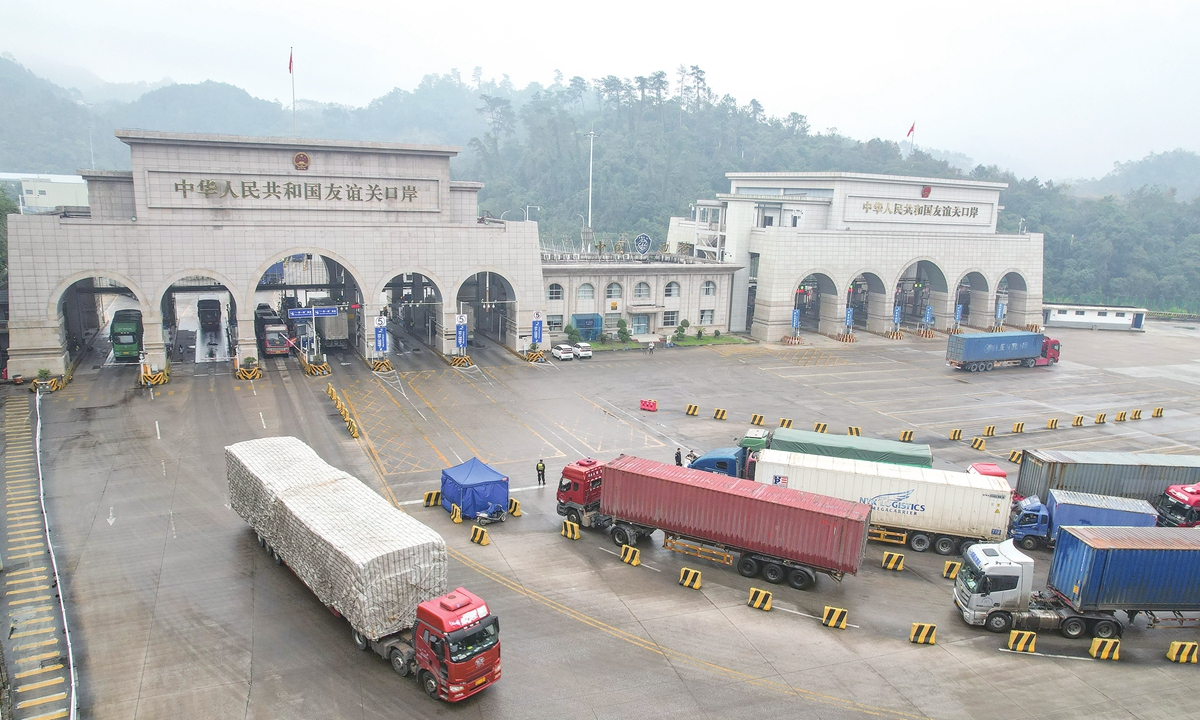
"The overall cost of producing in Vietnam is higher than shipping from China to Vietnam. However, customers, due to the need for stable supply chains and ensuring after-sales service, require us to have a factory in Vietnam; otherwise, they would not place orders with us," he said.
As more Chinese enterprises transfer their production processes to Vietnam and Mexico, discussions about whether these countries can replace China as the next "world factory" have been incessant. Many are concerned that during the reshaping of the global industrial chain, there might be a scenario where "the apprentice outdoes the master, leaving the master without a livelihood." On this issue, the unanimous response from all Chinese businesspeople interviewed by the Global Times was: it is very unlikely.
The reasons they listed are multifold. Despite lower labor costs, Chinese companies often face higher production costs due to factors such as efficiency and logistics, among others. Additionally, there is often a lack of technical talent, the infrastructure is not as good or as complete as China, and the market size in those countries is limited.
'Connector countries' on the rise?
According to Zhang, the real reason that makes Vietnam a key destination for this wave of Chinese enterprises going abroad is geopolitical influence. In a political climate where some American politicians are seeking to "decouple" from China, many orders from the US and Europe that originally went to companies within China have shifted to "connector countries" or "intermediate countries." Chinese enterprises have also transferred part of their deliveries to these places to avoid US tariffs, contributing to the rise of these countries.
In Zhang's view, the role that countries like Vietnam are playing today is somewhat similar to that of Hong Kong in the past. Before 1978, China had very few connections with the West, and Hong Kong was sufficient as a "connector." Today, China's economic ties with the West are deeply intertwined, and the so-called "decoupling" will actually create a group of "connector countries." Southeast Asia, Latin America, and the Middle East could all play this role.
But the geopolitical dividend often comes with risks: if one day the US policy closes off these "connectors," the manufacturing development prospects of these countries will face heightened uncertainty. This risk is not impossible. In May, the US announced it would end the tariff exemption for solar panel imports from Vietnam, Cambodia, Malaysia, and Thailand, and initiated new anti-dumping and countervailing duty investigations.
"I just met with a factory manager from Shenzhen who came to Vietnam for an inspection last week. They began renting a factory in Vietnam at the end of last year, but now they are very hesitant about buying land and making long-term investments here," Guo told the Global Times. "Their reason for coming to Vietnam was because of US tariffs, but the boss believes that the international situation may change significantly in five years. Whether the US cancels the tariffs imposed on China or imposes new tariffs on Vietnam, staying in Vietnam might no longer be meaningful."
However, for China, the issues to ponder might be even more complex: historically, when the manufacturing and macroeconomic development of countries like those in Europe, the US, and Japan reach a certain level, the relocation of industrial chains seems to become an inevitable process. In Zhang's view, this will undoubtedly have some impact on domestic employment and macroeconomic growth in China in the short term.
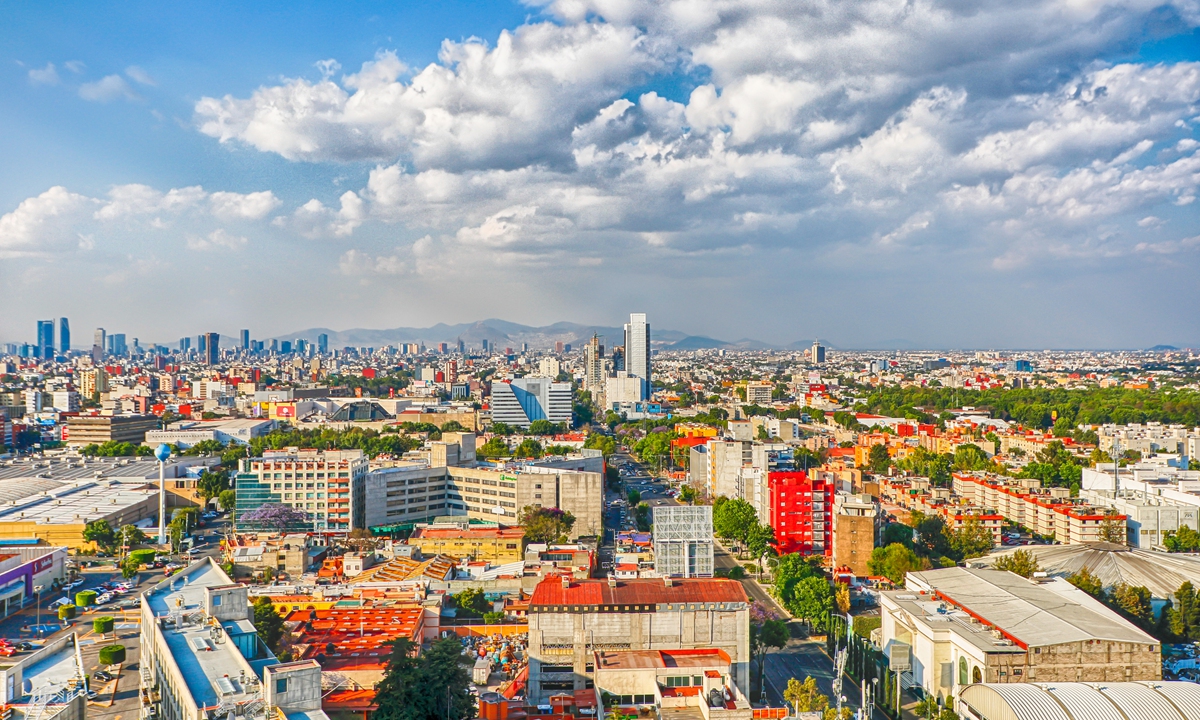
However, from another perspective, it is precisely in such an era of "going global" that China has the potential to produce a cohort of truly multinational giant enterprises, similar to how Japan incubated world-class companies like Toyota and Panasonic. In the future, Chinese enterprises capable of delivering overseas are expected to experience a wave of growth against the trend, according to Zhang.
"In my opinion, even without the push from US tariffs, Chinese enterprises will eventually have to move toward a global capacity layout. Production ultimately needs to be close to the market; this is an economic rule," Hu said.
"In the future, 'Made in China' should gradually become 'Chinese headquarters, global delivery,' meaning that the development of core technologies and the production of key components will remain within China, while other production processes will be transferred to countries and regions where delivery is more convenient," he said.
"Let us witness China's transition from the 'big GDP era' to the 'big GNP era,'" Zhang said.
Since 2023, a new wave of Chinese enterprises going abroad has gained momentum. According to data from the Ministry of Commerce, China's non-financial outbound direct investments (ODI) in 2023 increased 16.7 percent year on year to 916.99 billion yuan. In US dollar terms, ODI totaled 130.13 billion dollars in this period, up 11.4 percent from a year earlier. Although it is no longer news that Chinese enterprises are going global, this new wave of overseas expansion by Chinese companies is showing more new characteristics. In this article, the Global Times reporters Xie Wenting and Bai Yunyi focused on Vietnam, which is close to China's "world factory" manufacturing base camp, and Mexico, which is close to the US market, and interviewed those involved in shaping these new markets. They shared their experiences with the Global Times, saying that in this process of global industrial chain reshaping, China indeed faces many challenges, but it is precisely in this era of "great overseas expansion" that China has the potential to produce truly "world-class enterprises."

A cargo ship sails near Qingdao Port in East China's Shandong Province. Photo: VCG
A new pie
"There are more Chinese people here!" — This might be the biggest impression that locals in Monterrey, the largest industrial city in northern Mexico, have had in the past two years. Whether in local parks or neighborhoods, or on international flights, Chinese faces are increasingly common.
In recent years, Mexico has become a new "gold mine" for many Chinese enterprises going abroad. The "triangular relationship" between the US, China, and Mexico has given rise to the popular term "nearshore outsourcing" in Mexican business circles in recent years. Many Chinese manufacturing companies have moved their production lines to Monterrey and other cities in northern Mexico.
"It's like a pie falling from the sky." Hu Hai, president of Hofusan industrial park in Mexico, describes the rise of Mexico's manufacturing industry in recent years.
"If the North American Free Trade Agreement (NAFTA), which took effect in 1994, was the first pie that fell from the sky for Mexico, then 'nearshore outsourcing' is the second pie," he said.
For Chinese enterprises, the biggest significance of setting up factories in Mexico is that their products can be considered Mexican-made, thereby avoiding the tariffs and non-tariff barriers that the US has imposed on Chinese goods amid China-US trade friction.
According to the updated United States-Mexico-Canada Agreement (USMCA) signed in 2020, many categories of products exported from Mexico to the US and Canada can enjoy lower or even zero tariffs. For example, if 75 percent of a car's components are produced in Mexico, the car can be exported to the US tariff-free.
It is worth mentioning that, compared to many other developing countries, Mexico itself has a strong industrial foundation: as early as the 1920s, American automotive company Ford set up factories in Mexico. After NAFTA took effect in 1994, many companies from other countries also transferred part of their industrial chains to Mexico.
However, a Chinese enterprise insider familiar with Mexico manufacturing industry told the Global Times that Chinese companies still face many challenges in setting up factories locally.
"Apart from the advantages in freight and tariffs, Mexico has almost no advantage over China in other areas of production," he said. He pointed out that in terms of labor and management efficiency, supply chain differences, and raw material costs, Mexico finds it hard to compete with China.

Night view of Hanoi, the capital of Vietnam Photo: VCG
Data from Mexican government departments show that depending on the manufacturing sector and skill level, the monthly wages of Mexican manufacturing workers typically range from $400 to $1,000. In China, this figure is about $620 to $930. In Vietnam, it is $250 to $500."Mexico's unique employment environment means that companies cannot simply transfer their management models from China to Mexico," Hu told the Global Times.
Three new characteristics
If Chinese enterprises going to Mexico are aiming to get closer to the US market, then their expansion to Vietnam is largely due to its proximity to China - the "world factory" base camp. Although it is not new for Chinese enterprises to enter Vietnam, in recent years, there have been significant differences compared to the past.
Zhang Weijie, a consultant working in the Vietnamese market, has interacted with a large number of Chinese enterprises expanding to Vietnam over the past two years. In his view, compared to 10 or 15 years ago, Chinese enterprises going to Vietnam now exhibit three new characteristics. First, manufacturing enterprises are upgrading from low value-added industries such as clothing and bags to mid-end manufacturing industries such as photovoltaics and 3C (computers, communications, and consumer electronics). Initially, they only engaged in downstream assembly in Vietnam, but in recent years, more upstream supply chains have also moved to Vietnam. Second, Chinese chain consumer brands such as Haidilao and Mixue Bingcheng have successfully established themselves in Vietnam in recent years. Third, there is the overseas expansion of Chinese technology and internet giants.
"The previous wave of Chinese enterprises going to Southeast Asian countries was mainly driven by the familiar logic of labor costs and consisted mainly of labor-intensive enterprises. However, the technical content and added value of this wave of enterprises going abroad have significantly improved," Zhang told the Global Times. "Moreover, the brand influence of Chinese enterprises going to Vietnam this time far exceeds that of the past."
Guo Wenchang is the deputy general manager of Ansheng Crane & Steel Structure Company. In 2020, Guo's company, which had long exported crane equipment to Vietnam, officially purchased land and set up a factory in Hanoi, beginning production there in 2022.
"Our main customers are enterprise workshops, so we are highly dependent on them. In recent years, due to reasons such as the US imposing tariffs on China, many Chinese export factories have moved to Vietnam, leading suppliers like us to also set up factories locally," Guo told the Global Times.

The busy Friendship Pass on the China-Vietnam border near Pingxiang city, Southwest China's Guangxi Zhuang Autonomous Region Photo: IC
"The overall cost of producing in Vietnam is higher than shipping from China to Vietnam. However, customers, due to the need for stable supply chains and ensuring after-sales service, require us to have a factory in Vietnam; otherwise, they would not place orders with us," he said.
As more Chinese enterprises transfer their production processes to Vietnam and Mexico, discussions about whether these countries can replace China as the next "world factory" have been incessant. Many are concerned that during the reshaping of the global industrial chain, there might be a scenario where "the apprentice outdoes the master, leaving the master without a livelihood." On this issue, the unanimous response from all Chinese businesspeople interviewed by the Global Times was: it is very unlikely.
The reasons they listed are multifold. Despite lower labor costs, Chinese companies often face higher production costs due to factors such as efficiency and logistics, among others. Additionally, there is often a lack of technical talent, the infrastructure is not as good or as complete as China, and the market size in those countries is limited.
'Connector countries' on the rise?
According to Zhang, the real reason that makes Vietnam a key destination for this wave of Chinese enterprises going abroad is geopolitical influence. In a political climate where some American politicians are seeking to "decouple" from China, many orders from the US and Europe that originally went to companies within China have shifted to "connector countries" or "intermediate countries." Chinese enterprises have also transferred part of their deliveries to these places to avoid US tariffs, contributing to the rise of these countries.
In Zhang's view, the role that countries like Vietnam are playing today is somewhat similar to that of Hong Kong in the past. Before 1978, China had very few connections with the West, and Hong Kong was sufficient as a "connector." Today, China's economic ties with the West are deeply intertwined, and the so-called "decoupling" will actually create a group of "connector countries." Southeast Asia, Latin America, and the Middle East could all play this role.
But the geopolitical dividend often comes with risks: if one day the US policy closes off these "connectors," the manufacturing development prospects of these countries will face heightened uncertainty. This risk is not impossible. In May, the US announced it would end the tariff exemption for solar panel imports from Vietnam, Cambodia, Malaysia, and Thailand, and initiated new anti-dumping and countervailing duty investigations.
"I just met with a factory manager from Shenzhen who came to Vietnam for an inspection last week. They began renting a factory in Vietnam at the end of last year, but now they are very hesitant about buying land and making long-term investments here," Guo told the Global Times. "Their reason for coming to Vietnam was because of US tariffs, but the boss believes that the international situation may change significantly in five years. Whether the US cancels the tariffs imposed on China or imposes new tariffs on Vietnam, staying in Vietnam might no longer be meaningful."
However, for China, the issues to ponder might be even more complex: historically, when the manufacturing and macroeconomic development of countries like those in Europe, the US, and Japan reach a certain level, the relocation of industrial chains seems to become an inevitable process. In Zhang's view, this will undoubtedly have some impact on domestic employment and macroeconomic growth in China in the short term.

The view of Mexico City Photo: VCG
However, from another perspective, it is precisely in such an era of "going global" that China has the potential to produce a cohort of truly multinational giant enterprises, similar to how Japan incubated world-class companies like Toyota and Panasonic. In the future, Chinese enterprises capable of delivering overseas are expected to experience a wave of growth against the trend, according to Zhang.
"In my opinion, even without the push from US tariffs, Chinese enterprises will eventually have to move toward a global capacity layout. Production ultimately needs to be close to the market; this is an economic rule," Hu said.
"In the future, 'Made in China' should gradually become 'Chinese headquarters, global delivery,' meaning that the development of core technologies and the production of key components will remain within China, while other production processes will be transferred to countries and regions where delivery is more convenient," he said.
"Let us witness China's transition from the 'big GDP era' to the 'big GNP era,'" Zhang said.


